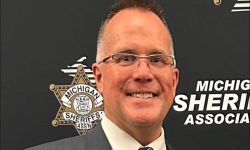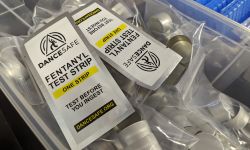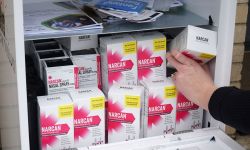How does Michigan use its opioid dollars? Here’s how Bridge found out

- Michigan doesn’t have centralized reporting for opioid expenditures
- Bridge surveyed 133 counties, townships and cities — an effort that took more than three months and work from six journalists
- The data is imperfect, but it’s the most exhaustive look to date of how Michigan’s communities are spending their share of national opioid settlement funds
An estimated $1.6 billion is destined for the coffers of Michigan’s state local governments over 18 years, but there’s no central reporting of how that money is being spent.
Bridge journalists began examining those expenditures in January, but found wide gaps in information as well as deep frustration from providers, advocates and grieving families who didn’t know where to turn for information.
As watchdogs of public funds, we sought to change that.
In June, Bridge contacted 133 local governments to find out more about spending in their respective communities. Altogether, those counties, cities and townships will share in about 97% of the estimated $725 million over 18 years.
Related:
- Michigan communities sit on $90M meant to help drug users, Bridge finds
- Amid drug crisis, one Michigan city is using money to help backfill budget
- How is your Michigan community spending opioid settlement money? Look it up
- Read Bridge’s ongoing coverage on how opioid settlement funds are being used — or saved — to tackle Michigan's drug crisis.
Some things to know:
- We contacted all 83 counties, plus each city or township that will receive at least $500,000 over 18 years.
- To maintain consistency, we asked each community about their receipts and spending as of June 1.
- Each community was contacted at least three times, and those that hadn’t responded within a few weeks received a Freedom of Information Act request.
- In all, 119 governments responded with varying levels of information. Some provided details and documents; others a simple number or two.
- As we have tried to reflect in our reporting in the “details” tab of the community look-up tool, some of those communities have since made other spending decisions. Undoubtedly, other communities also have made spending decisions this summer. We updated information that was made available in public records or media accounts about government meetings from June 1 to Sept. 1.
Despite the remaining gaps in information, Bridge’s examination is the most detailed review yet of these expenditures.
To analyze priorities, Bridge divided each community’s spending details into eight categories. There’s a subjectivity in those decisions.
For example, is a social worker assigned to a police department a “law enforcement” expense, or a “prevention, treatment and recovery” expense? Likewise, a new Oakland County epidemiologist will identify gaps in services, track hotspots of drug use, and oversee the money. Is that an “administrative” expense, or a “prevention, recovery and treatment” expense?
We also categorized some expenses as specific — housing, transportation, medication assisted treatment to produce our final report.
Get help
For help with opioid abuse, call the SAMSHA National Hotline, a 24-hour, 365-day-a-year, treatment referral hotline. 1-800-662-HELP (4357)
See what new members are saying about why they donated to Bridge Michigan:
- “In order for this information to be accurate and unbiased it must be underwritten by its readers, not by special interests.” - Larry S.
- “Not many other media sources report on the topics Bridge does.” - Susan B.
- “Your journalism is outstanding and rare these days.” - Mark S.
If you want to ensure the future of nonpartisan, nonprofit Michigan journalism, please become a member today. You, too, will be asked why you donated and maybe we'll feature your quote next time!








